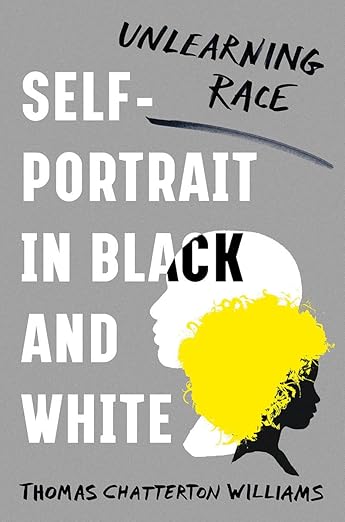A Self Portrait in Black and White

Self Portrait in Black and White is a memoir by Thomas Chatterton Williams about the learning and then unlearning of his racial identity—a rejection of the notion that race should be the defining attribute by which we see ourselves. It is also a story about the ways race is understood varies between 2 countries: America and France. As a child in America, he learned to identify as black from his father and other children at school, despite the fact that his mother is white. In adolescence, he leans into his blackness. He choses to go to an academically worse but more diverse high school1. He associates with black boys and dates black girls. Perhaps Williams would have continued viewing himself as a black man if it were not for a fateful study abroad in France, during which he fell in love with the country.
In France, Williams’ black and white view of race is challenged. His tan complexion causes him to be perceived not as a black man but an Arab. He finds that his nationality dictates his interactions more than his race. But his view is ultimately upturned when he meets his white French wife Valentine. with whom he has a blue eyed, blonde daughter Marlow. Under the one drop rule, she would have been considered black. In the past, she could be enslaved by people who look just like her. And yet, her appearance and 75% European ancestry make that seem ridiculous. She is clearly white. Race, as everyone knows, is primarily social construct. It is only in the edge cases—quadroons and octoroons as they were once called—that this is made naked.
In the last part of the book, Willams wrestles with the pros and cons of black essentialism. Its cons are numerous: the black-white division was created for the purpose of oppression; for Williams, blackness carries a historical trauma which he does not want to pass on. Ultimately, it reduces the infinite interior lives of individuals to a singular group membership. But blackness has also forged a bond which has given its members and the world so much. Maybe this is why William’s rejection of race seems half-hearted at times. He wants to get rid of the bad while keeping the good.
-
Although the presence of girls at the high school was likely a bigger factor. The other high school was all-boys. ↩